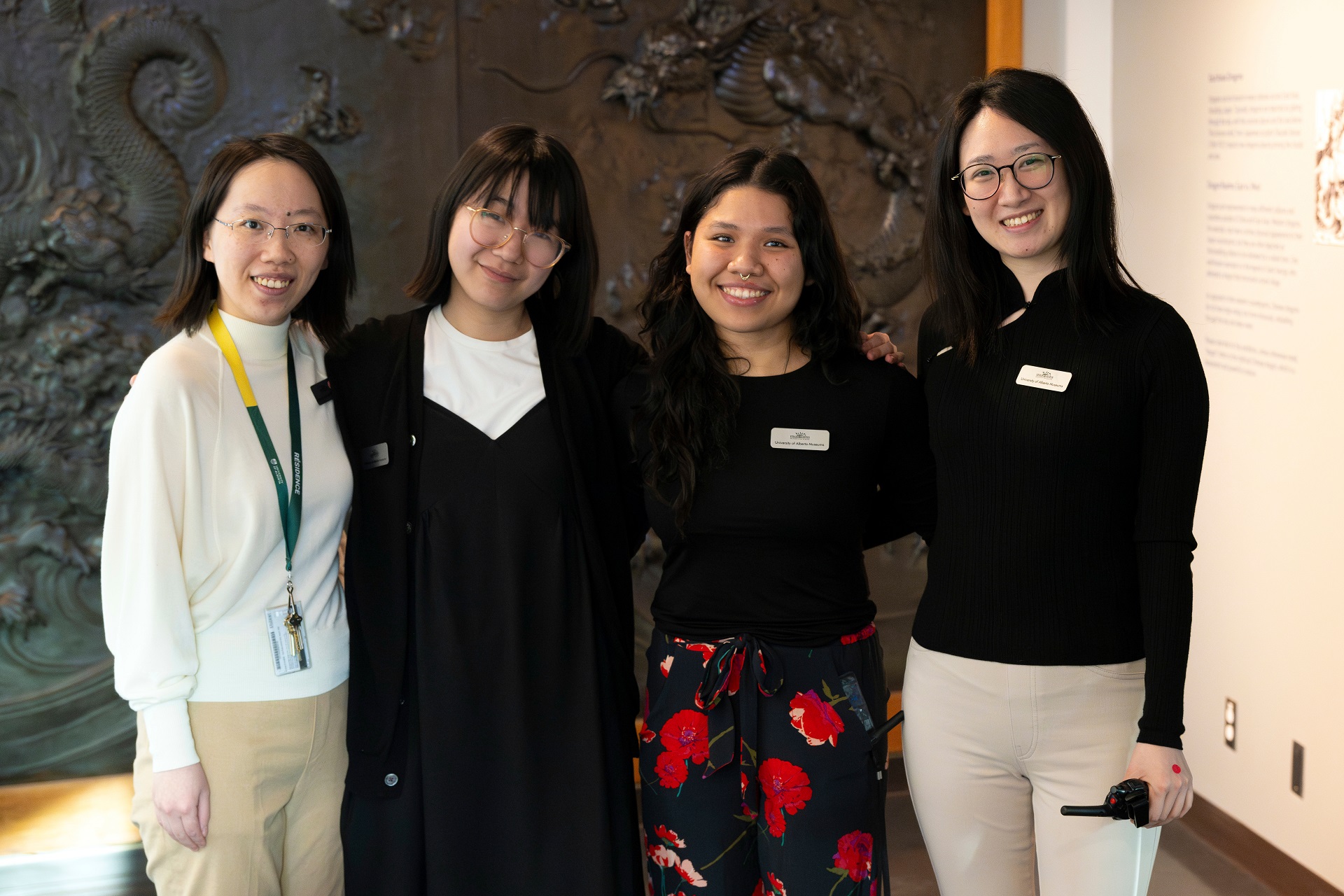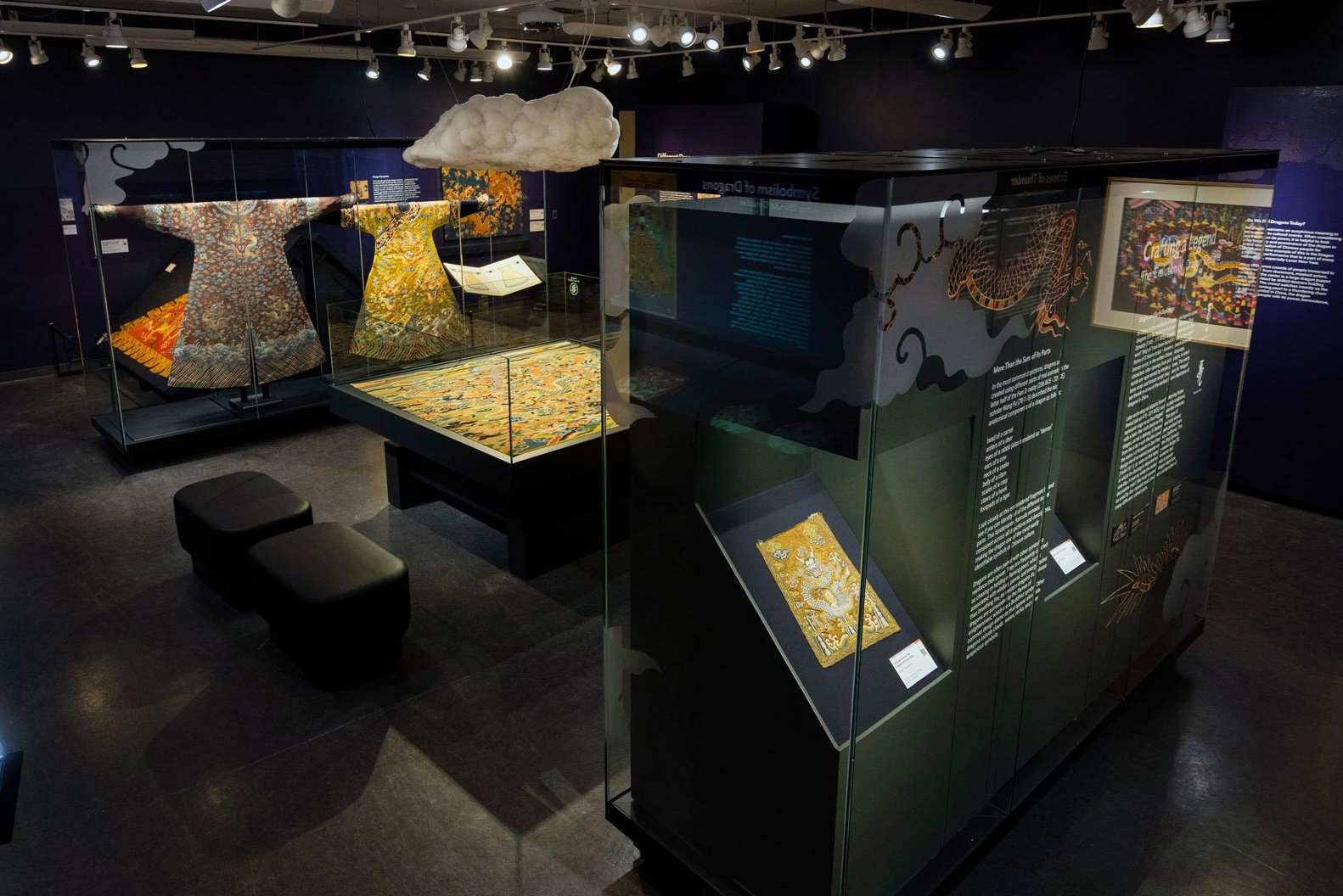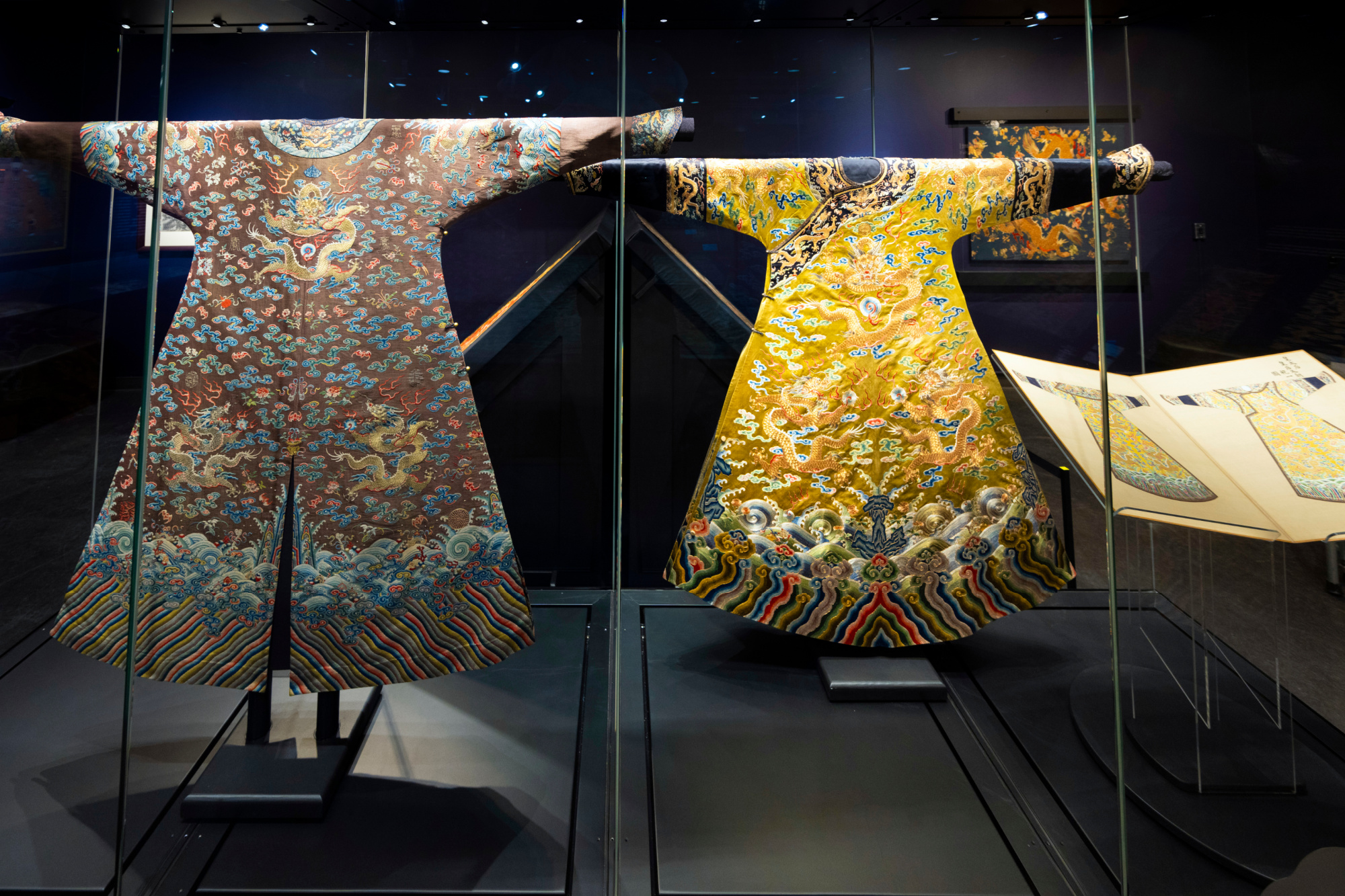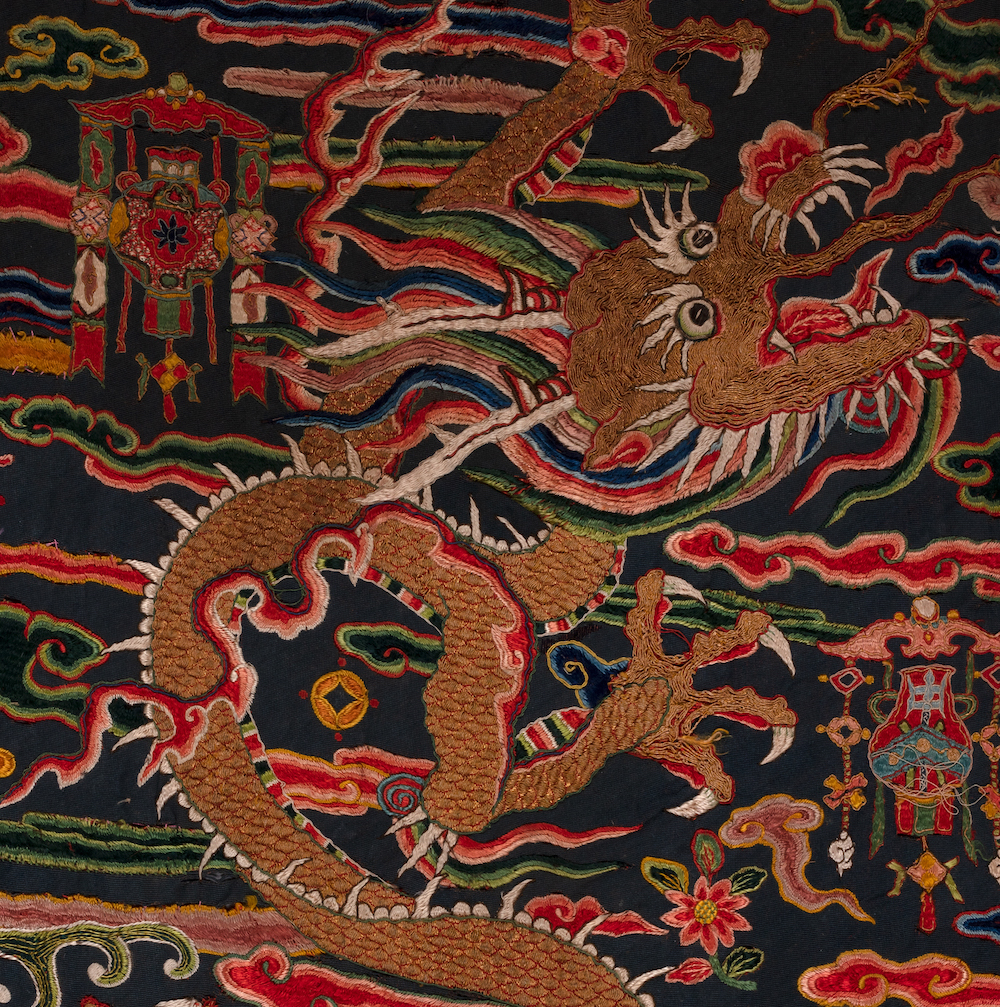Art in Focus: “Gateway to the Interior” by Lyndal Osborne
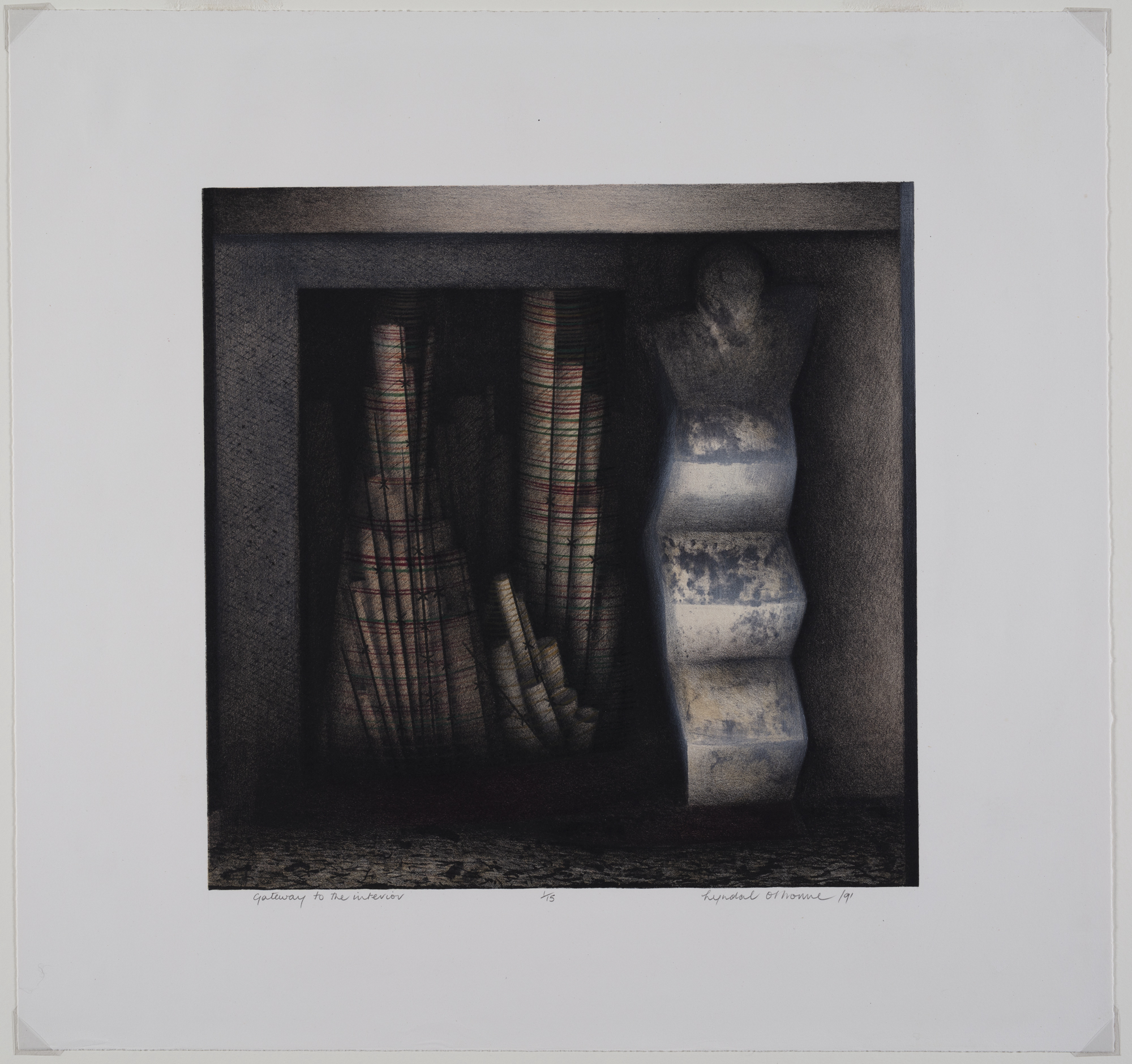
“Gateway to the Interior,” 1991; Ink on paper: colour lithograph; Lyndal Osborne, Born Newcastle, New South Wales, Australia, 1940; University of Alberta Museums Art Collection, University of Alberta Museums; 1996.3.1
In her 1991 lithograph Gateway to the Interior (1996.3.1), multidisciplinary artist and University of Alberta professor emeritus (Department of Art and Design) Lyndal Osborne brings the viewer into a dream-like space filled with contrasting shapes. On the right side of the image, there is a form that resembles a staircase, and on the other side, a series of multicoloured striped organic-like stalks. The mood the work conveys is one of mystery, the unknown. In addition to the shapes and colours of the print, the work of art offers contrasting textures on the surface of the paper. Indeed, the print evokes a visual interest in understanding the layers and depths the print presents.
At the heart of Osborne’s practice is the need to uncover and understand the natural world, often by depicting the subtleties of space and time. When making art, Osborne feels like “like an archeologist seeking and retrieving discarded fragments of the urban environment and the dried out remains of natures' seasons.”1 Gateway to the Interior is one of nine works of art by the artist in the University of Alberta Art Collection.
The print is a colour lithograph. It is a process where a design is drawn directly on a limestone slab using an oil-based wax-based crayon and once the drawing is completed, the image is treated with rosin (dry tree sap powder), gum arabic and a mild acid to etch the drawn image on the limestone. The overall image is then wiped away with a solvent, leaving an image embedded onto the surface. The limestone is inked and then printed using a press. This labour-intensive process is repeated several times when the print uses colour as each colour registers a separate mark on paper. In other words, each layer is repeatedly printed for every print in a series.
In addition to printmaking, Osborne is perhaps best known for her multi-dimensional sculptures and installations. These works often repurpose and reuse discarded materials to highlight the urgent need to address the ecological crisis facing humanity today. These works transform the everyday and more importantly, “it impresses us less with debilitating decay, more with its elegant creativity and an ambivalent evolution.”2
Born in Australia, Osborne completed her MFA at University of Wisconsin-Madison and immigrated to Canada in 1971 to teach at the University of Alberta. She has exhibited widely since the 1970s and more recently, Osborne exhibited her work in a two-person exhibition with printmaker and mentor Jack Damer at FAB Gallery at the University of Alberta. Gateway Into the Interior shows the technical and conceptual range of Lyndal Osborne’s practice and continued commitment to question the world around us.
1 Artist Website: https://www.lyndalosborne.com/
2 Michelle Hardy, “Introduction,” Lyndal Osborne: Mutation of the Commons (Calgary: University of Calgary and Nickel Galleries, 2018), 6.
This web story is part of the University of Alberta Museums Art Collection Spotlight Series, a collection of web stories aimed to share works of art from the University of Alberta Museums Art Collection with the world. Posted monthly, these stories connect works of art in the Collection to important matters on our campus and in our world.
